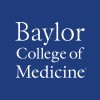
Antibiotic Therapy in Viral Airway Infections
Infectious DiseaseInfluenza2 moreAntimicrobial resistance is one of the most urgent health threats of our time, and Norwegian hospitals were required to reduce the use of broad-spectrum antibiotics with 30% by the end of 2020. In the current proposal, the investigators aim to assess the efficacy and safety of early discontinuation of antibiotic therapy in adult patients infected with respiratory viruses. A general recommendation to treat all instances of community acquired pneumonia (CAP) patients with antibiotics leads to significant antibiotic overtreatment. In 2008, the US Food and Drug Administration approved the first multiplex polymerase chain reaction assay for the detection of multiple respiratory virus nucleic acids simultaneously. The wide availability of such nucleic acid amplification tests (NAAT) for rapid viral detection together with chest radiographs has the potential to define patients who can be managed without antibiotics. Akershus University Hospital is one of the largest hospitals in Norway, with a catchment area of more than 550,000 people. In 2012 to 2013, the majority of patients admitted to Akershus University Hospital with suspected CAP and a positive viral NAAT were treated with antibiotics, a prescription pattern representing antibiotic overtreatment. The investigators accordingly hypothesize that discontinuation of antibiotic therapy in patients with moderately severe disease and airway sample positive for respiratory viruses is safe and non-inferior to continuation of antibiotic therapy.

Long-Acting Treatment in Adolescents (LATA)
HivHIV Infections2 moreThe LATA trial will find out if taking a long-acting injectable form of HIV medicines, called cabotegravir and rilpivirine, every 2 month works as well as taking tablet HIV medicines every day in young people aged 12-19 years of age. The trial is organised by an international group of researchers from Europe and Africa, and will include 460 young people, from Kenya, South Africa, Uganda and Zimbabwe.

Nutritional Supplement for Patients With Severe Infection
Severe InfectionThis is a randomized trial testing a supplement that has been approved by Health Canada to support healthy cholesterol levels (i.e. high density lipoprotein (HDL) cholesterol). This trial is proposing to use this approved supplement to determine whether it is able to raise HDL cholesterol in patients treated in the intensive care unit (ICU) with severe infection who have detrimentally low levels of HDL cholesterol. Patients who present to the ICU with severe infection will be approached for consent. If they choose to participate, patients will be given usual care or a 150mL daily nutritional supplement containing lauric acid (15 ml) and Berberine (1000 mg) daily for 14 days. Participants will be followed during their stay in the ICU and will receive follow up phone calls at Day 28 and 90.

A Trial of Anti-CD4 Antibody UB-421 in Combination With Optimized Background Antiretroviral Therapy...
Multi-Drug Resistant Hiv-1 InfectionHIV-1 InfectionBackground: People with HIV usually take a combination of 2 or more anti-HIV drugs daily to help manage their infection. Sometimes, however, HIV becomes resistant to these drugs, and the infection cannot be treated. Untreated HIV infection can make people more vulnerable to other infections as well as some cancers. Better treatments are needed for people with drug-resistant HIV. Objective: To see if a study drug (UB-421) is effective in people with drug-resistant HIV. Eligibility: People aged 18 years and older with HIV that is resistant to anti-HIV drugs. Design: Participants will be in the study for 35 weeks. Participants will have separate screening and baseline visits within 2 months of each other. They will have a physical exam with blood and urine tests both times. On the second visit, they will undergo apheresis: Blood will be drawn from a needle in one arm. The blood will pass through a machine that separates out the white blood cells. The remaining blood will be given back through a second needle in the other arm. Participants will begin receiving the study drug 1 week after their baseline visit. UB-421 is given through a tube attached to a needle placed in a vein in the arm. They will return for UB-421 treatments every week for 26 weeks. Each visit will take 3 to 6 hours. Participants will have 2 follow-up visits 4 and 8 weeks after their last treatment with UB-421. Apheresis will be repeated at 1 of these visits.

Safety and Efficacy Study of Contezolid Acefosamil and Contezolid Compared to Linezolid Administered...
Diabetic Foot InfectionThis is a Phase 3, multicenter, randomized, double-blind, safety and efficacy study of contezolid acefosamil (IV)/contezolid (PO) compared with linezolid (IV and PO) administered for a total of 14 to 28 days in adult subjects with moderate or severe DFI.

Thermotherapy Against Persistent Bacterial LUNG Infections
Lung DiseasesObstructive5 moreThe aim of this study is to determine whether an intervention with frequent thermotherapy will be able to reduce the amount of colonizing bacteria in the bronchoalveolar lavage sample and eradicate the colonizing bacteria.

EBV-specific Cytotoxic T-lymphocytes (CTLs) for Refractory EBV Infection
Epstein-Barr Virus InfectionsPrimary Immune Deficiency DisorderRelated donor Epstein-Barr Virus (EBV) specific cytotoxic T cells (CTLs) manufactured with the Miltenyi CliniMACS Prodigy Cytokine Capture System will be administered in children, adolescents and young adults with refractory EBV infection post Allogeneic Hematopoietic Stem Cell Transplantation (AlloHSCT), with primary immunodeficiencies (PID) or post solid organ transplant. Funding Source: FDA OOPD

Decrease Implantation Site INFECTION : a Randomized Controlled Trial
InfectionCardiovascular implantable electronic device (CIED) infections have been increasing out of proportion to the number of devices implanted the investigators investigated recent trends and possible causes of the increasing numbers of Cardiovascular implantable electronic device infections.

Optimal Antibiotics for Operated Diabetic Foot Infections
Diabetic Foot InfectionSurgical Wound2 moreDiabetic foot problems, especially infections (DFI), require multiple resources including iterative surgeries and amputations, long-lasting antibiotic therapies, education, off-loading and eventually revascularization and appropriate foot-ware. Treatment is complicated, multidisciplinary, and marked with a high risk of recurrences. This is a retrospective and prospective cohort with side studies of pathologies and academic research questions that cannot be separated from each other. The investigators establish a retro-and prospective cohort of diabetic foot problems (ambulatory and hospitalized patients) and perform side studies to reduce the incidence of complications, and to reduce recurrences of DFI, cost and adverse events related to therapies. Cohort: Prospective and retrospective cohort of all diabetic foot problems with emphasis on surgical and infectious variables. Trial 1 (Randomized trial on residual infection after amputation): Determination of the level of amputation per MRI followed by a randomization concerning the duration of post-amputation systemic antibiotic therapy, if there is residual bone infection. Trial 2 (Randomized trial on infection without amputation): Determination of the duration of systemic antibiotic therapy in diabetic foot infections without Amputation of the infection.

TETRAVI Multivirus CTL for Treatment of EBV, CMV, Adenovirus, and BK Infections Post Allogeneic...
Viral InfectionThe purpose of this study is to use VSTs (virus-specific T cells) from a donor that is a partial HLA (human leukocyte antigen) match with the patient to treat viral infections after an allogeneic hematopoietic stem cell transplant (HSCT). These cells may also have value in CAR-T recipients who have received a product that depletes virus specific T cells. The patient must have had a myeloablative or non-myeloablative allogeneic HSCT using either bone marrow, single/double umbilical cord blood, or peripheral blood stem cells (PBSC) or CAR T cell product targeting an antigen expressed on virus specific T cells. After a transplant, while the immune system grows back, the patient is at risk for infection. Some viruses can stay in the body for life and are normally controlled by a healthy immune system, but if the immune system is weakened, like after a transplant, they can cause life threatening infections. He/she must have had an infection with one or more of the following viruses -Epstein Barr virus (EBV), cytomegalovirus (CMV), adenovirus (AdV), Human polyomavirus type I (BKV), and human polyomavirus type II (JCV)- that has persisted or recurred despite standard therapy. In this study, the investigators want to use white blood cells that have been trained to treat viral infections. In an earlier study the investigators showed that treatment with such specially trained T cells has been successful when the cells are made from the transplant donor. However as it takes 1-2 months to make the cells, that approach is not practical for patients who already have an infection. In a subsequent study, the investigators were able to create multivirus-specific T cells (VSTs) from the blood of healthy donors and created a bank of these cells. The investigators then successfully used these banked cells to treat virus infections after a stem cell transplant. In this study the investigators have further modified their production method to decrease the potential side effects and the investigators want to find out if they can use these banked VSTs to fight infections caused by the viruses mentioned above.
